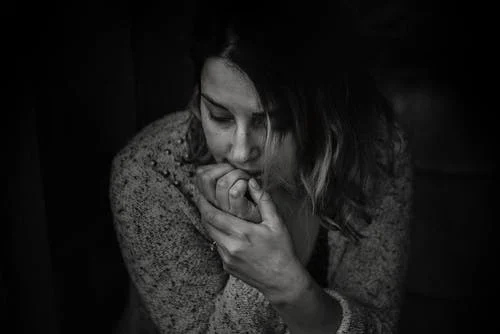Seasonal affective disorder, also known as SAD, is a form of depression that occurs seasonally — typically in the fall or the winter. This is because the fall and winter months have shorter days with fewer daylight hours, which may trigger a chemical change in the brain that creates symptoms of depression like sadness, disinterest, social withdrawal, and fatigue.
SAD doesn’t usually impact those under the age of 20, but the risk increases as you age throughout adulthood.
Does SAD Affect Sleep?
Along with feeling sad and disinterested in their surroundings, those suffering from seasonal affective disorder might also experience problems sleeping. Since daylight during the fall and winter months is much less than the summer months, your body naturally makes more melatonin when it is dark outside.
This excess in melatonin can lead those with SAD to feel extremely sleepy and unrested throughout the day. It also causes them to sleep longer during the night — typically sleeping for two extra hours each night during the winter.
Because people with SAD feel exhausted all the time, they have a more difficult time getting out of bed in the morning and might find the need to nap during the day. However, they’ll often find that sleeping later or taking naps doesn’t provide them with any relief from their tiredness. Along with making the patient more tired, those with SAD are also more susceptible to nightmares.
Feeling unrested and tired can negatively impact a person’s physical and mental health — making it more difficult for them to manage their moods and emotions. That’s why it’s essential to get treatment if you’re suffering from seasonal affective disorder.
How to Treat Seasonal Affective Disorder
While SAD typically only impacts patients during the fall and winter months, treatment options are available to help you manage your symptoms until they relieve themselves in the spring and summer. Some of these treatment options include:
- Sun exposure – When you’re not feeling like yourself, it can be hard to peel yourself off the couch. But getting yourself outdoors (or near a window!) and in the sunlight is an easy way to relieve some of the symptoms you’re experiencing.
- Light therapy – If sun exposure isn’t an option, you can opt for light therapy instead. This treatment option exposes the patient to a special light for specific durations of time throughout the day.
- Therapy – Cognitive behavioral therapy can help you work through some of the struggles you’re experiencing during these darker days and help you focus on improving interpersonal relationships and managing your stress.
- Antidepressants – Depending on the severity of the seasonal affective disorder, antidepressants can help correct the chemical imbalance in the patient’s body.
What If SAD Isn’t the Problem?
If you suspect you’re suffering from seasonal affective disorder, you should schedule a consultation with your physician for a check-up.
But what if your problem isn’t SAD? What if your sleep problems are due to a sleep disorder like sleep apnea? Sleep apnea can affect you any time of the year--even summer. That’s because it isn’t tied to the seasons, but rather a physical problem that doesn’t go away by itself.
If you suspect your sleeping problems are more than a seasonal issue, you’ll need professional help to diagnose and provide treatment. That’s where ApneaMed can help.
They will screen for sleep apnea through the use of a home sleep apnea test and provide a personalized treatment plan to help you get your sleep back on track.
If you’re interested in improving your mood, getting back your energy, and relieving your sleeping issues, contact ApneaMed to learn more.

